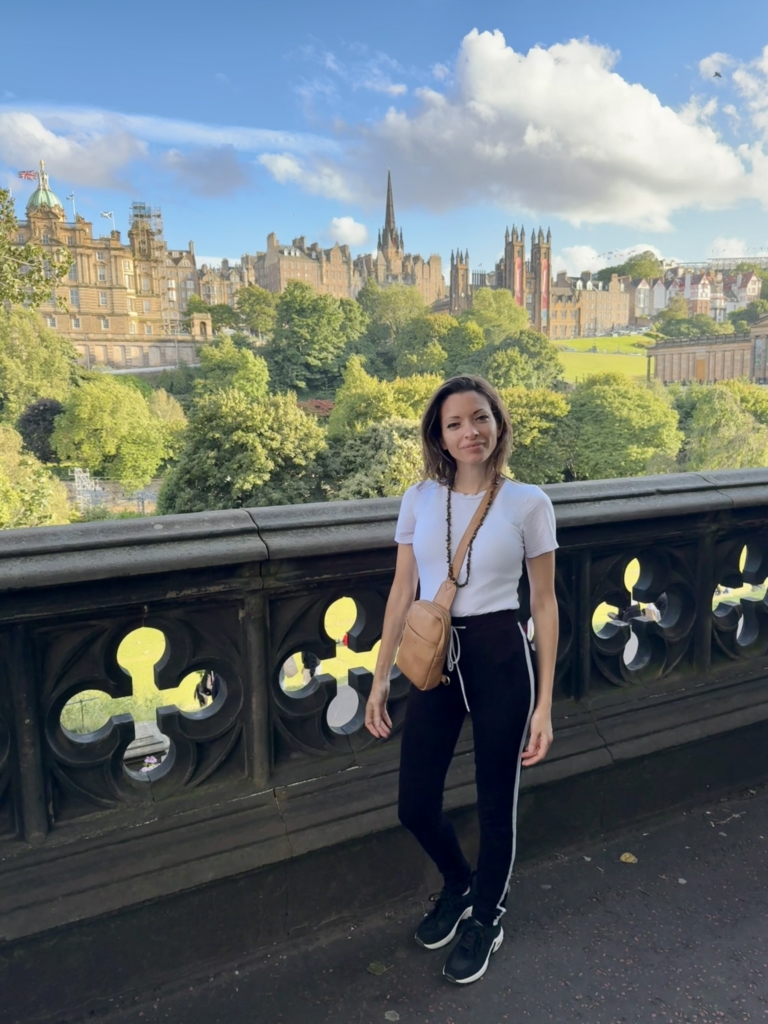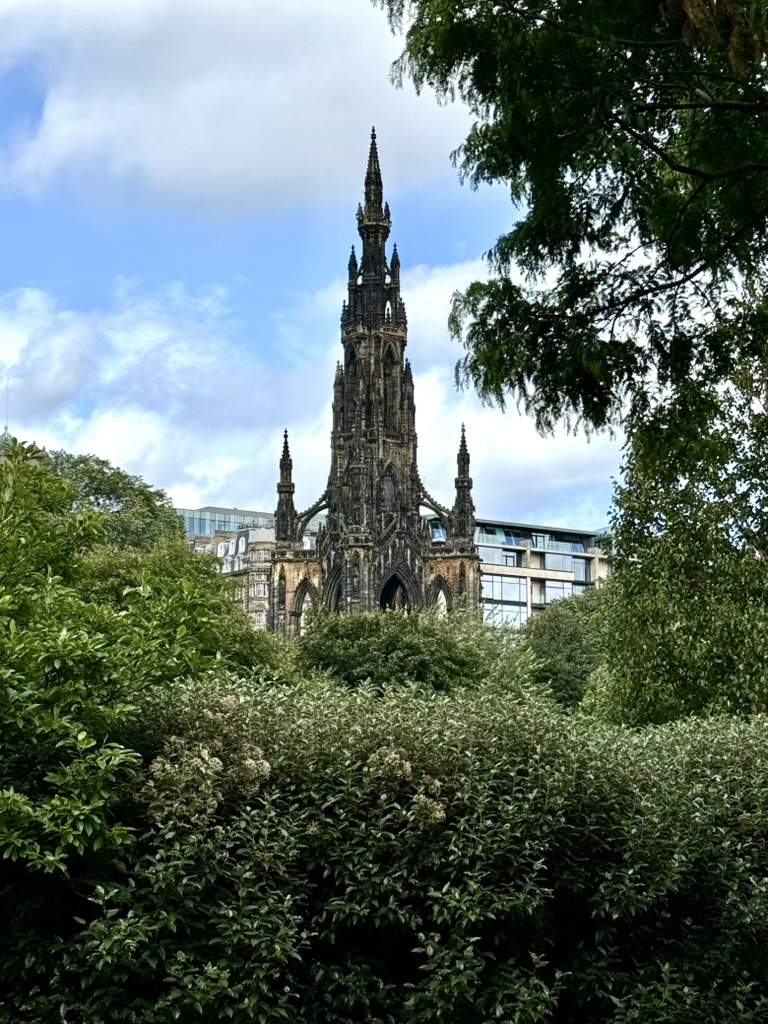My wife, mother and I board the train at Penrith, England, after a week in the Lake District. The scenery rolls by in our advance north, and we stop at intervals gathering more passengers as we approach the border of Scotland. The three of us are at a foursome table chatting intermittently. My wife is mostly on her phone writing content for her business, though she occasionally looks up to take a photo of the landscape.
Diagonally to us, at a table just like ours, are four men. Despite the early time of 10am, they are sipping beers from cans. They are neither loud and unruly, nor quiet and discreet. They casually converse, as if in a living room where no one would listen in or care about the banter they share. They are unaware this is a side hobby of mine.
They share a friend named Andy, who is not present. He helped one of them with a renovation at the house recently. It was some drywall, painting and electrical work. Andy, as I discover, is one of these reliable disasters. He’s dependable, for he always comes to help when someone’s in need of handywork, but he’s equally dependable at doing a piss-poor job at whatever task he’s been assigned to.
And yet, there is no animosity in the description of Andy’s misadventures. These four men seemingly have Andy partake in reno work for the sole purpose of having stories about his incompetence. Between these chums, there is an entire anthology of Andy’s misdeeds. But there is an air of melancholy that hangs over the table while they open another beer: it is that Andy is not with them to hear their loving cuts. After all, when you take the mickey out of someone, it’s always best when they are present.
I love listening to them. I feel somehow linked to this group – they remind me of my own friends. And I think that is what is strangest about the whole scene. I am growing fond of them because of the affectionate and jabbing way they talk about Andy, who’s not even present.
***
The train arrives at Edinburgh’s Waverley station. As we leave and exit onto Market Street, we have a small dispute on whether to take a cab or walk to the hotel. I insist on walking. It’s a habit from my old backpacking days: it helps me orient the city and figure out main thoroughfares. I win the argument because I am the only one that knows the hotel name. I tell my companions it’s a minor 5- or 10-minute stroll. It will be more like 20 with the luggage, but my mom and wife will realize it too late. Hopefully, we will be committed to the endeavour by that point. Naturally, I am a gentleman, so I take my mother’s luggage along with mine. My wife, Kira, is left to fend for herself.
As we cut through Princes Street Gardens, I remember Edinburgh. I also realize how much I have forgotten. It’s familiar and entirely new – that’s what 25 years does to memory. I don’t recall the extent of the perch that the old city sits on and just how beautiful the buildings are.
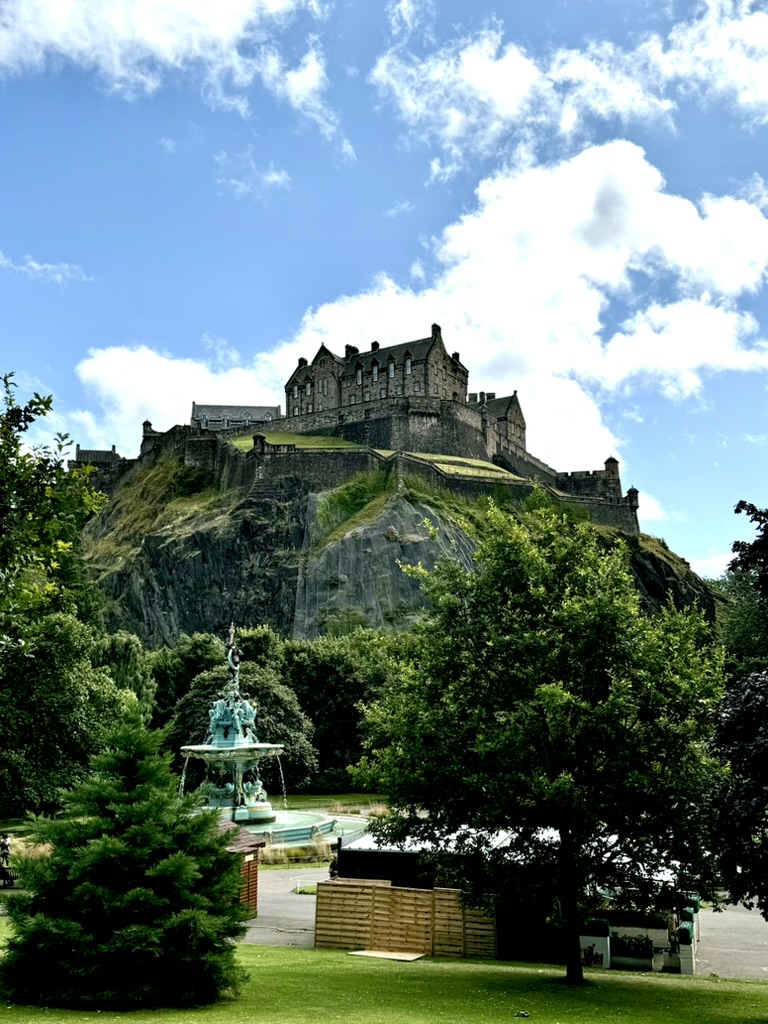
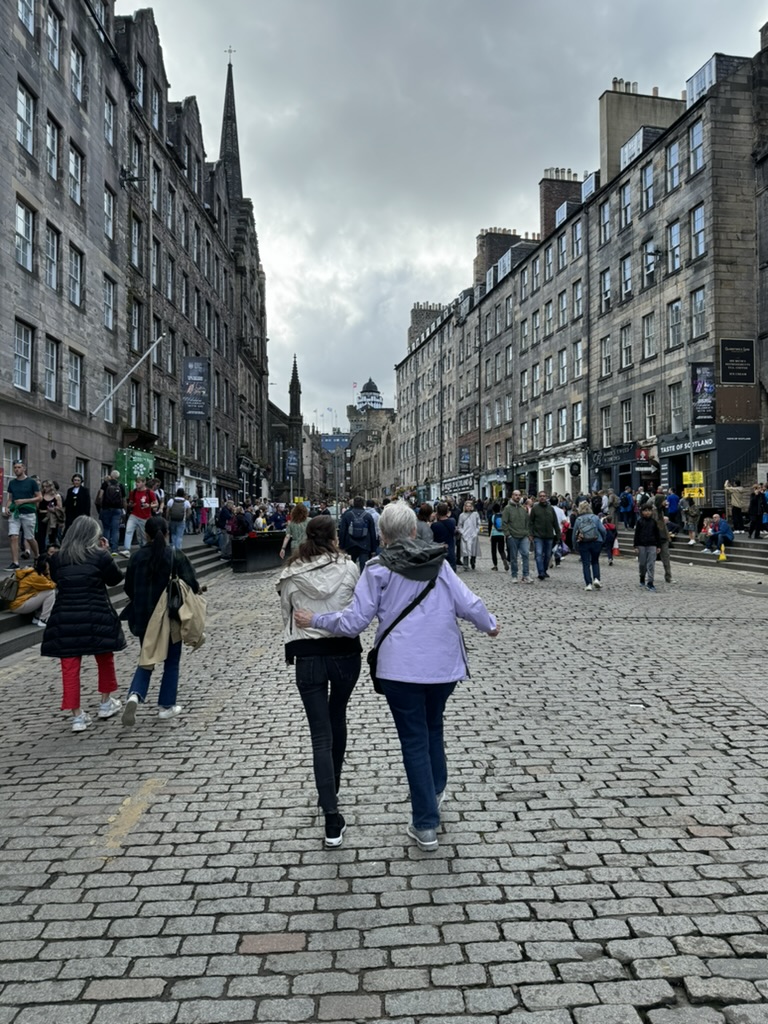
My first trip here was in 2000. I had been researching at the University of Cambridge for a semester and made the most of my weekends and vacation days by exploring Britain. I experienced the wonderful Fringe Festival with a couple of cheap plays, walked the city, crawled the pubs, and heard plenty of pipers. I attended a very enjoyable rendition of Shakespeare’s A Midsummer Night’s Dream held at a bar. It was both interactive and intoxicating. A great weekend with few stable recollections, but a definite feeling that I had a fantastic time in a pleasant city. Now, as I look up at the wall of buildings from Princes Street Gardens, I marvel that some of these views slipped my mind.
We arrive without incident at our hotel. My ploy of getting them walking was successful, and only once did I hear: “I thought we’d be there by now.” The hotel is basic, but meets two out of three of my usual requirements: safe and a good location (within a 20-minute walk to key sites). I had to forego my third requirement – affordable. I am completely shocked at the price of accommodation. My Candian dollar might as well be an Italian lira. With the Fringe Festival and the famous Military Tattoo happening at the same time, affordability is impossible. Back in 2000, I didn’t notice it as much when staying in a dive hostel with dormitory rooms and eating pizza slices for meals every day. Neither of these options is available to me now.
One of the two rooms is ready despite the early hour. We throw all our luggage in it and take a stroll up to the Royal Mile to indulge in the performances of the street buskers. This is busier than I remember, but the acts continue to be lively and colourful. Every 40 metres greets the ears with a new performer crying for a crowd to gather around his or her show. Oddly, the performances seem to me variations of what I saw back in 2000. There is the juggling of balls, swords, and firesticks, there are tricks with footballs and bikes, and there are makeshift drum sets that reveal some astonishing talent at percussion. The buskers do a wonderful job of engaging the audiences, especially children, spewing out jokes and jabs for young folks that double in meaning for the adults. At the end of each show, the calls for payment begin. Here, too, I see the cost of inflation. In 2000, buskers requested a pound or 2, with a 5 or 10 pounder being a big score. Now, we start at 5 pounds, and 20 pounds or more is the score.
***
It is the nighttime event that I am eager for. After a dinner of burgers, we prepare for the Edinburgh Military Tattoo.
This is likely my mother’s final trip outside of Canada. At 84, she’s blessed to still be mobile. For many years, she often watched some snippets of the Edinburgh Military Tattoo on some television station or other. She was very interested in it and flagged it as one of those performances she wished she could see.
I am blessed to have the means to deliver this wish to her.
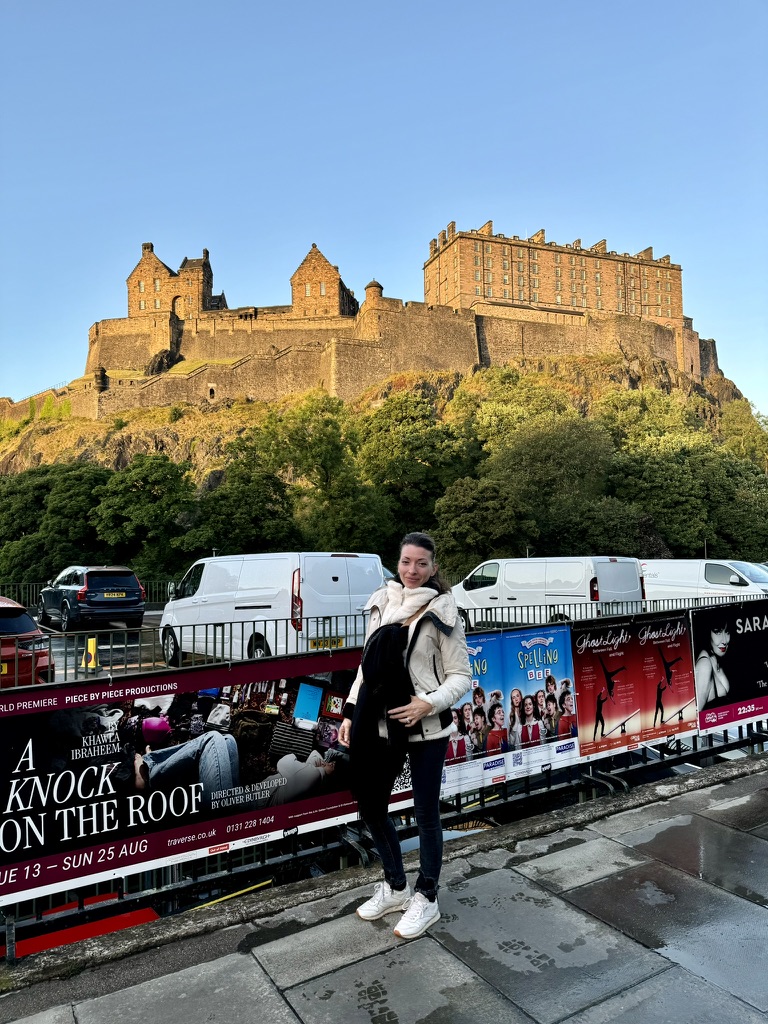
Even in August, the evenings can get cold in Edinburgh. We layer our clothes and walk up Johnston Terrace, a road that snakes its way to Edinburgh Castle and the Esplanade, where the Tattoo is held. When we pass the ticket scanners, there are multiple vendors lining the walk selling memorabilia and souvenirs. But there is one man hawking blankets that gets my attention. He has a message of warning.
“It’s cold up there in the high seats!” He shouts. “With the wind, it’s minus 30. You could freeze! Get your blankets now!”
We walk past him smiling. Though we are not bundled up with heavy clothes, I think that we should be alright and I am certain it won’t be -30.
But this exaggeration of the temperature is not without some truth. When we take our seats higher up in the stands, the wind is cool and there is a light rain. I can see my mother shrinking in on herself; and Kira, who finds the cold insufferable being of Trinidadian descent, is quiet and grim faced with a look that reads: “hope the show is done soon.”
So, I leave the ladies and promptly run back to the prophet of subzero temperatures and procure two blankets at a hefty price. I even grab a few thin plastic ponchos for rain protection. This really is a case of ‘in for a penny, in for a pound’ thinking. Given the price of the tickets to see the show, the expense of the hotel and every other associated cost, it is ridiculous to skimp out on warmth to merely endure the concert and await its ending. Twenty minutes into the show, I know I’ve made the right decision. We are warm and enjoying the performance.
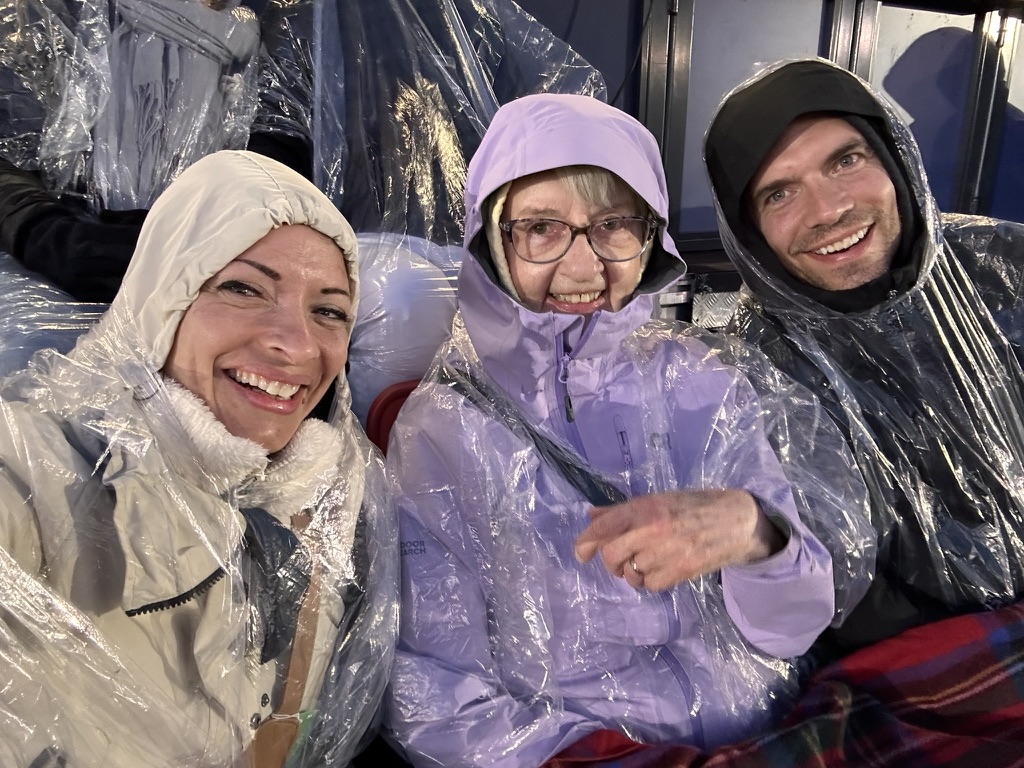
The Edinburgh Military Tattoo is quite an experience. Since 1950, it has been held outside the walls of Edinburgh Castle and boasts a range of bands and performances from around the world: from traditional bagpipers to drum corps, and from marching bands to Indian Bhangra dancers. Not only is each performance special in its own right, but they are all enhanced by a wonderful light spectacle projected on the walls of the castle.
I have always been awestruck by large groups moving in perfect coordination and precision. There are two highlights for me at the show. The first is the Swiss drum corps, called Majesticks, with their glowing drum sticks and perfectly orchestrated movements. The second is the US Navy Ceremonial Guard who can spin rifles in perfect unison and toss one of them in the air over a line of men with such accuracy that it lands in the hand of another, as if it was pulled by a magnet. And, of course, there is the staple performance of Scottish bagpipers, whose mass of wheezing pipes and the thrum of twirling beaters on bass drums and the rapid tap of sticks on tenor drums combines to make a powerful and spirited sound that moves even me, a man with not an ounce of Scottish blood.
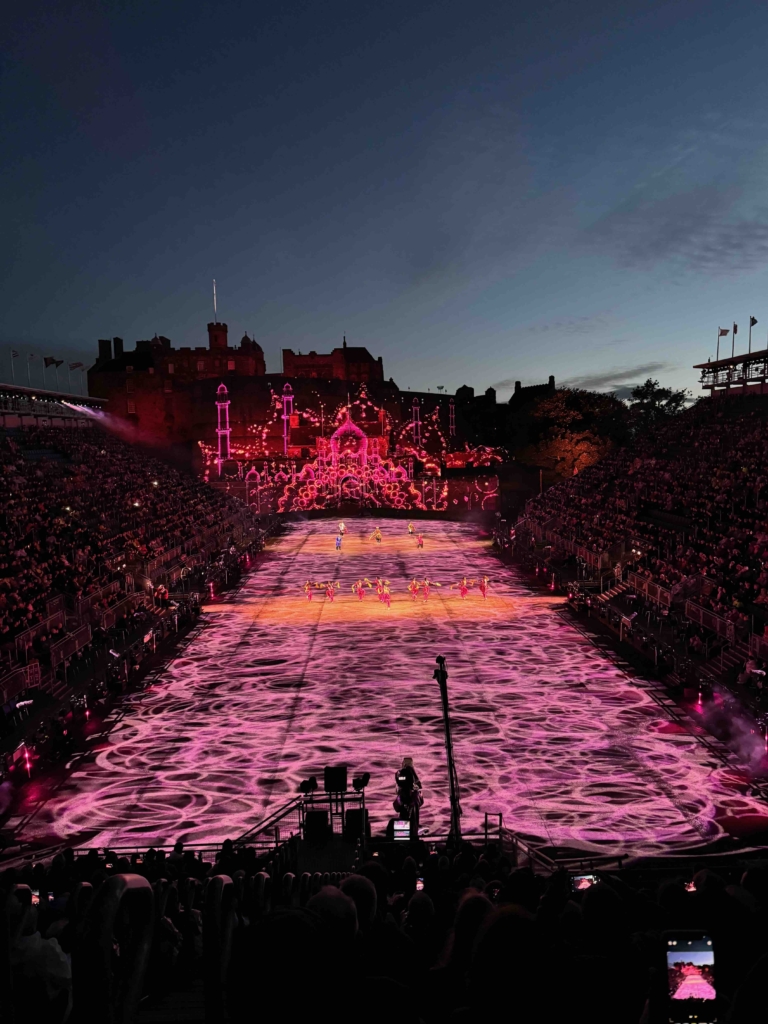
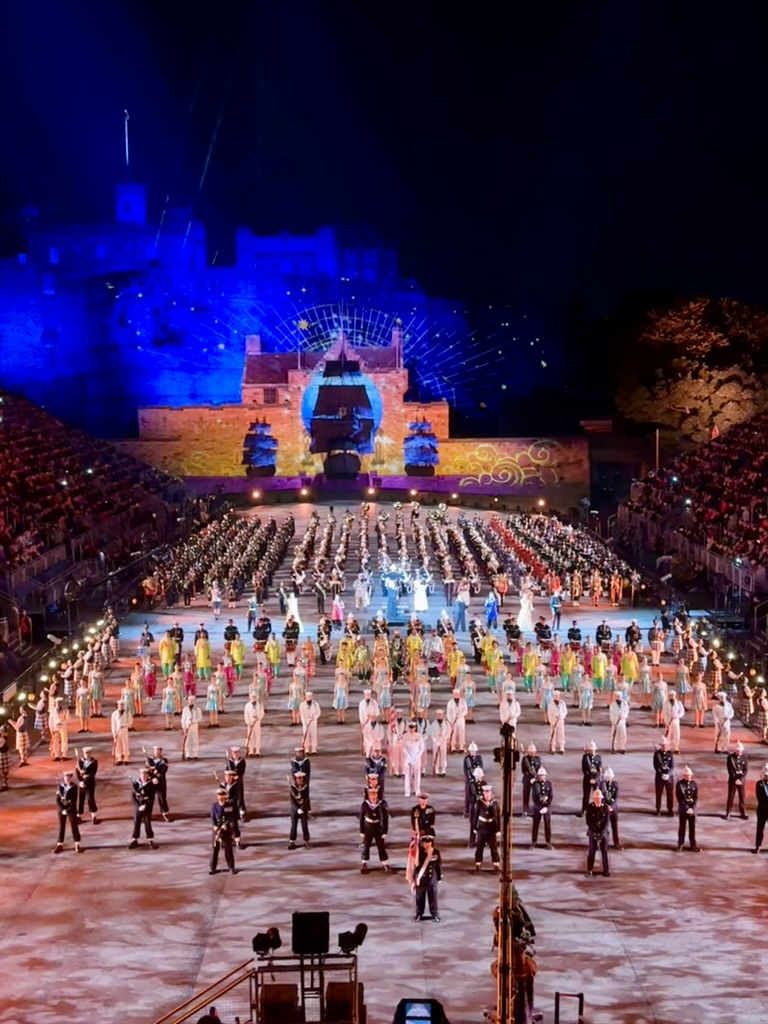
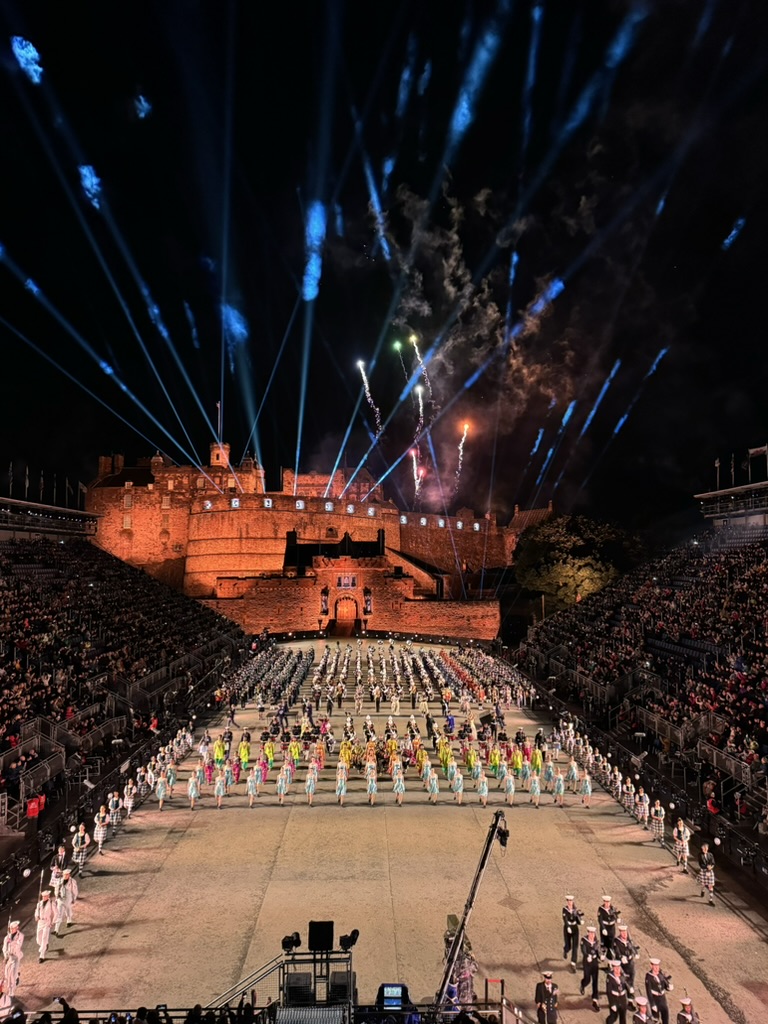
A finale of lights and fireworks caps the night wonderfully. Mom thought it a great performance worthy of a post event pint and my wife, too, loved it. Thus, it was a perfect night. And we even got two overpriced blanket souvenirs.
***
The next morning, my mother and I go for brunch while my wife catches up on some work. We speak of our enjoyment of the Tattoo.
And then she says it rather abruptly: “I’m taking a bus tour today. I want you and Kira to have the day together.”
It’s the tone she has when she says it. I know when I can brook her another way and when I can’t. This falls in the ‘can’t’ category. She’s obviously thought about it for a little bit and has come to this resolution.
I am saddened that she feels she is somehow a third wheel at times, and she thinks that I would enjoy a day more fully without her. I won’t. I am grateful and proud – yes, proud – that we can do these excursions together. I love sharing my love of travel with her. Yet, she is decisive on this occasion and has not made this demand at any other time on the trip. So, I give her this battle, not that I have a choice.
Kira and I walk to the famous Dean Village. For hundreds of years, the village had various grain mills operating and was surrounded by workers’ housing. But after a period of deindustrialization, the village declined and fell into disrepair and poverty. It became a somewhat blighted area from 1900 to 1950 when the mills were closed, and the crumbling buildings were populated by residents barely making ends meet. These former citizens would be astonished to know that the village is now a sought-after neighbourhood that includes restored worker cottages and luxury apartments.
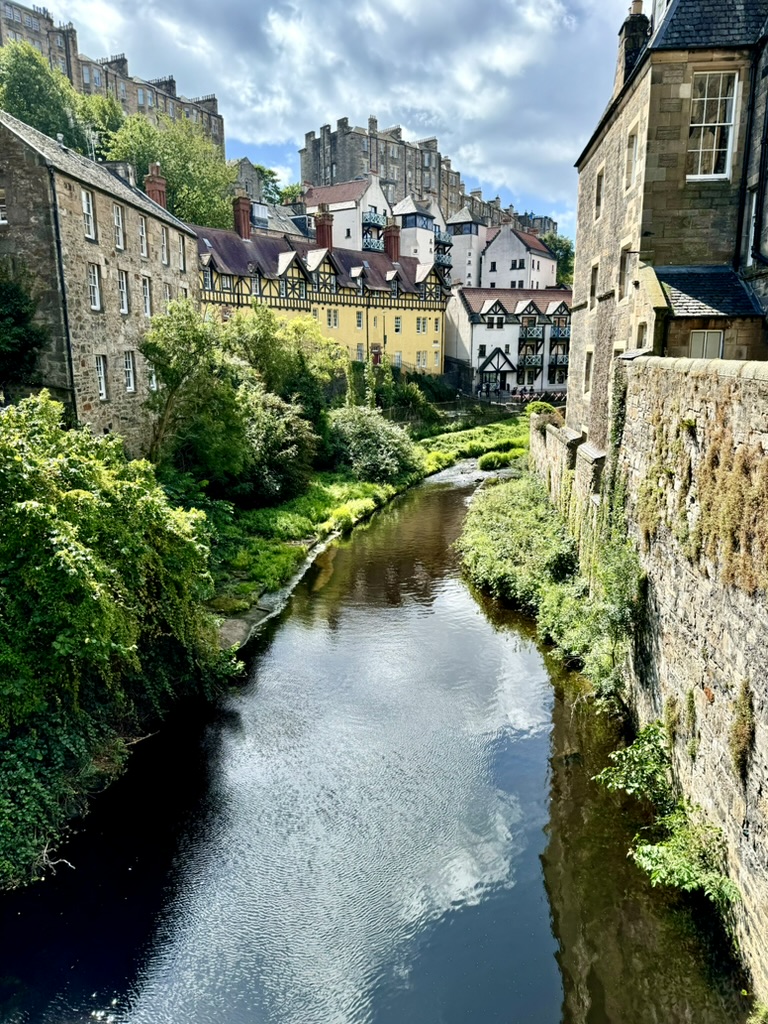
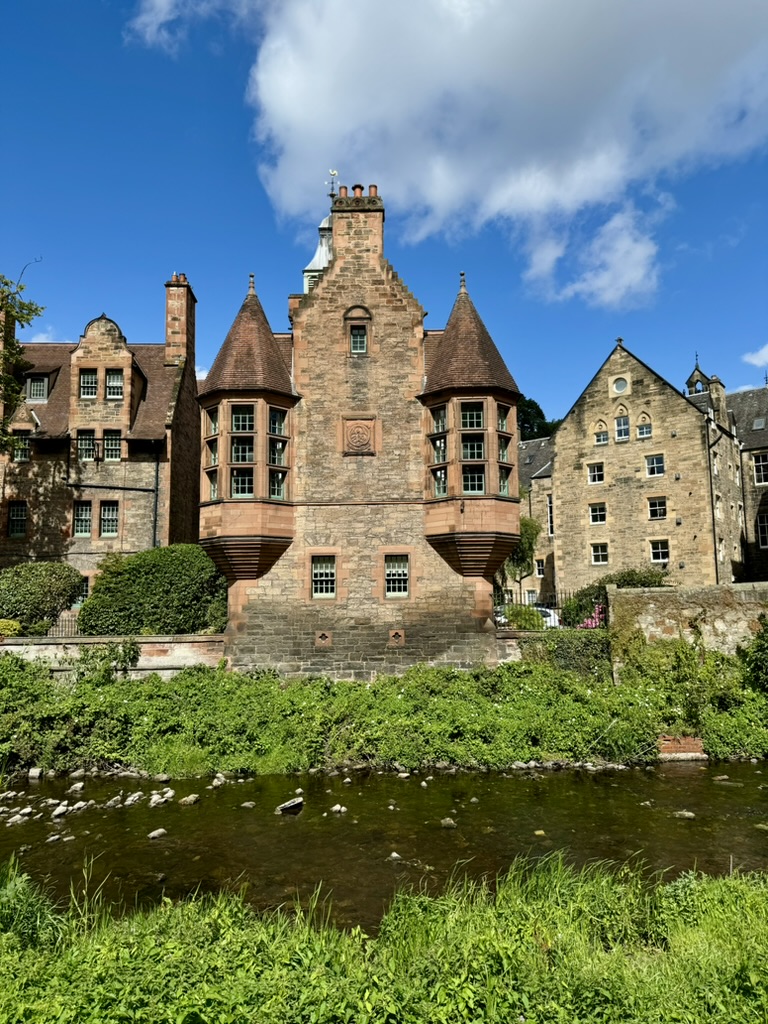
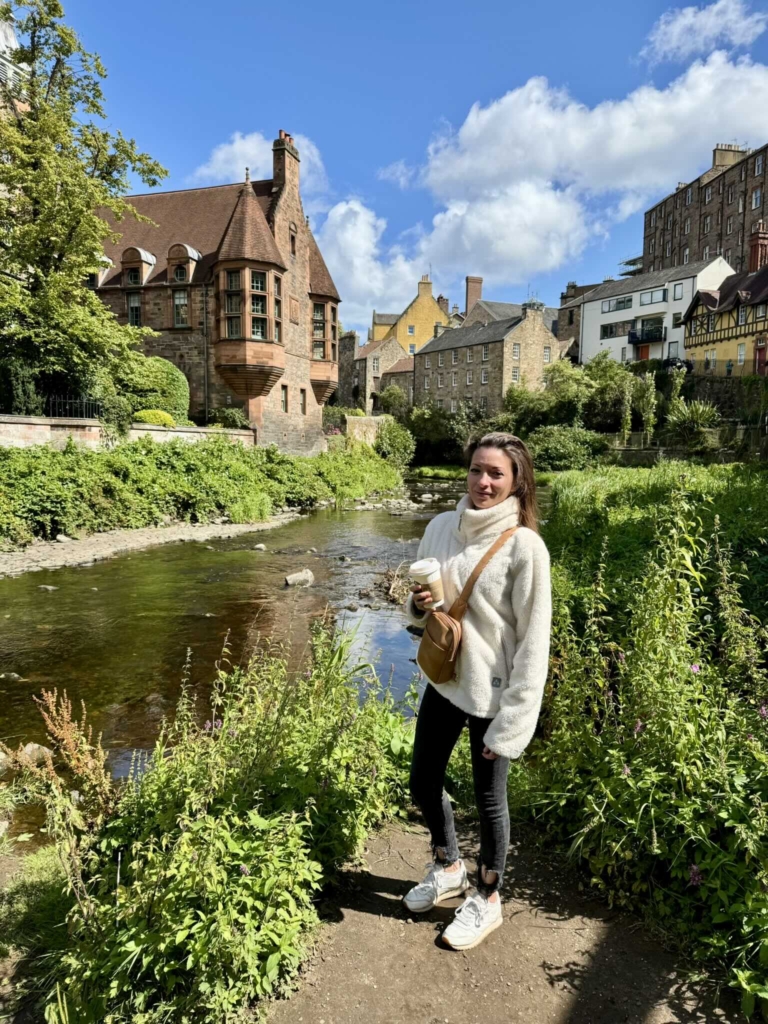
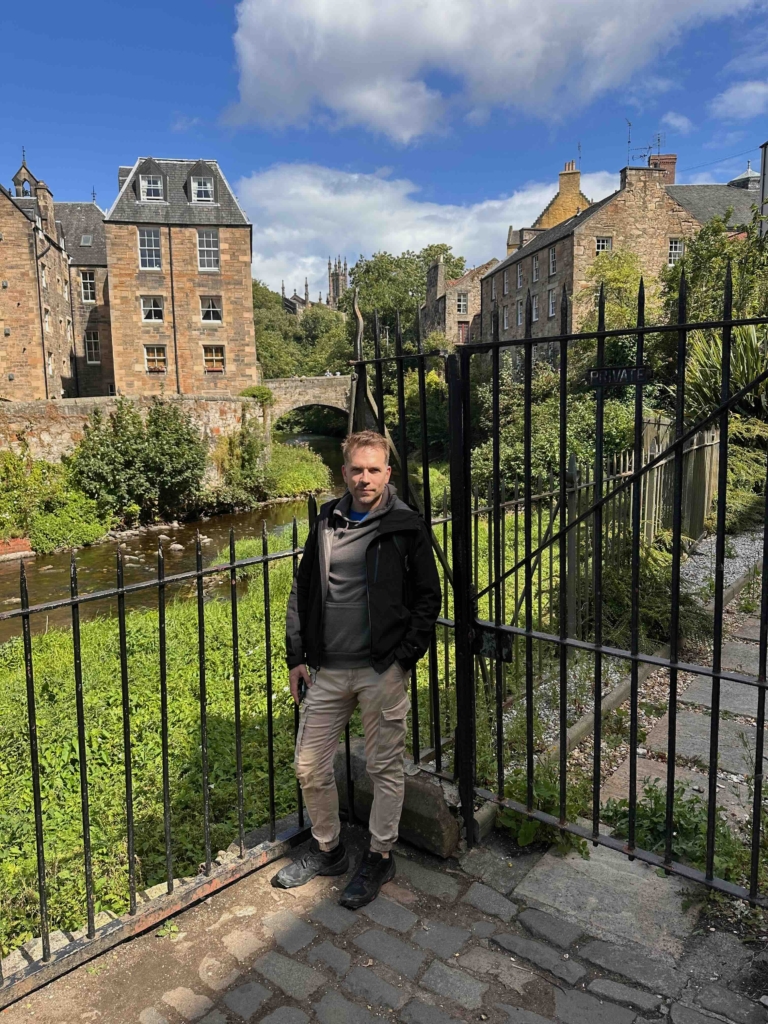
There is undoubtedly a tranquil charm here with its cobbled streets and the lovely Leith River flowing through the village. But it is also a prime tourist destination ranked in the Top 5 of every ‘must see’ Edinburgh list. Visitors will often wait to take a picture at prime points as they jockey and maneuver for the perfect backdrop to a selfie. This is not to suggest you ought not go to Dean Village, it just means you should manage your expectations.
The more enjoyable time for me is strolling on the Water of Leith trail that flanks the river. This well-maintained path runs for some 7 miles passing through various little villages and sites, but we are on it for only a short stretch to St. Bernard’s Bridge. We pass by St Bernard’s Well, a small, ornate Greco-Roman temple structure standing curiously alone by the river. A statue of Hygieia, the goddess of health and cleanliness, is displayed inside the temple (you will rightly see the word “hygiene” in this goddess’ name). I am always fascinated by how much Modern Europe and Britain underpinned their art and architecture with a revery for the ancient Greeks and Romans. Even here, in the epicentre of the Scottish Enlightenment in the 18th and 19th century, where there was a flourishing of scientific and creative thought, the Scots charted a new path forward with their own distinct style while recalling the magnificence of older civilizations and empires.
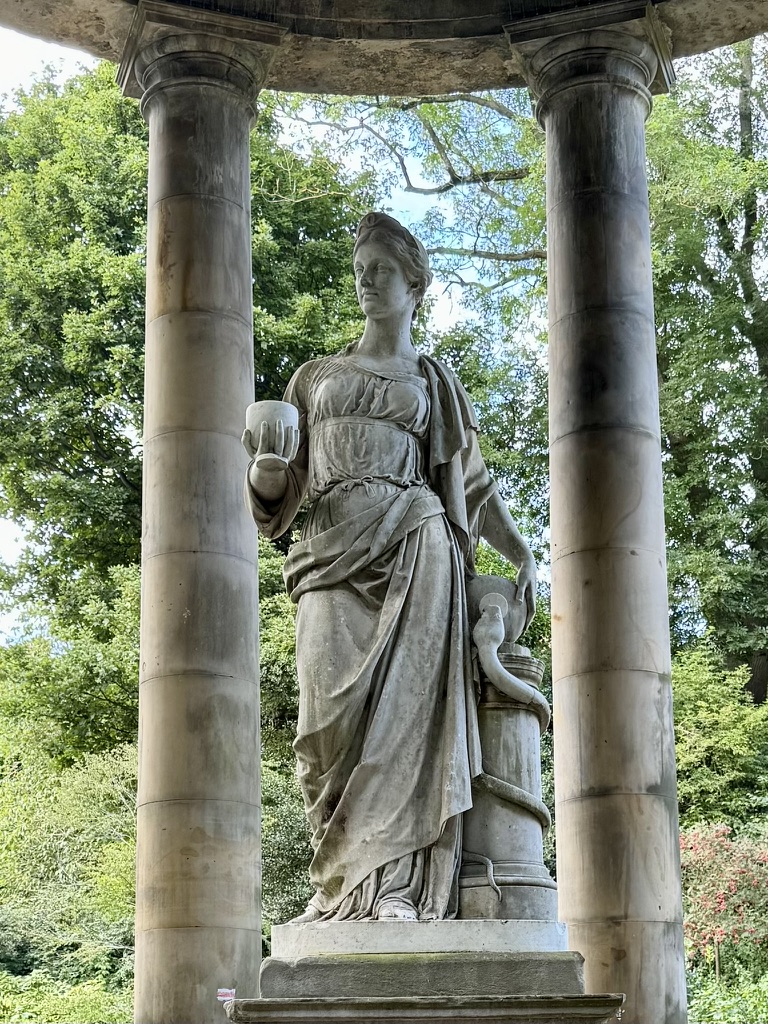
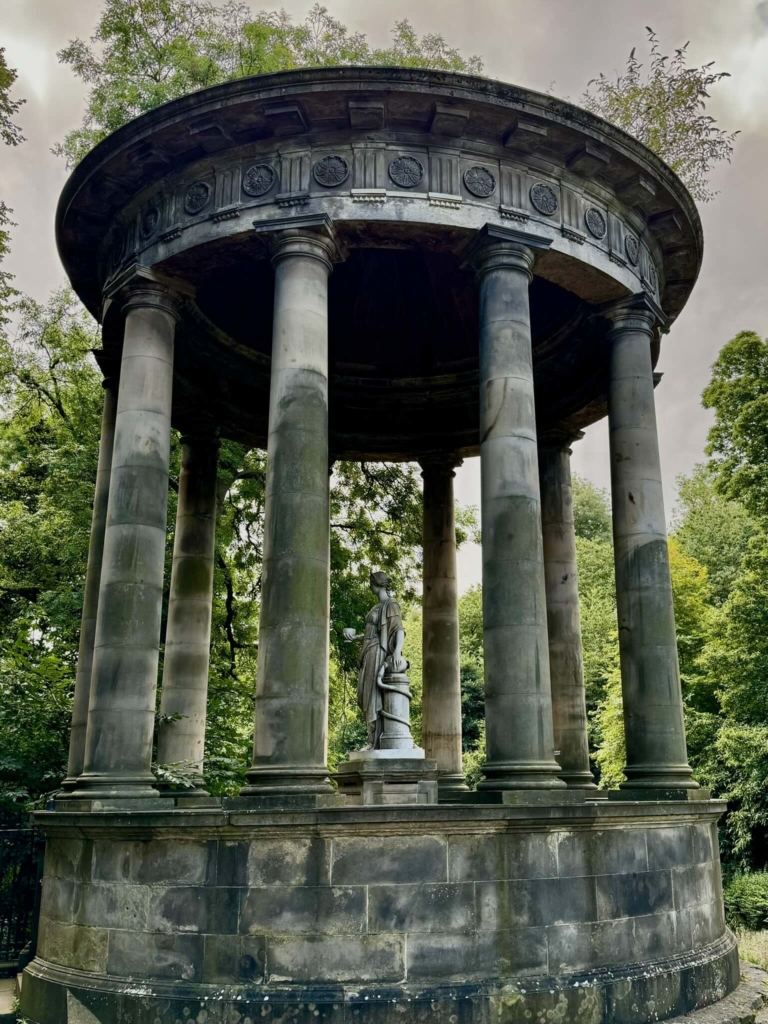
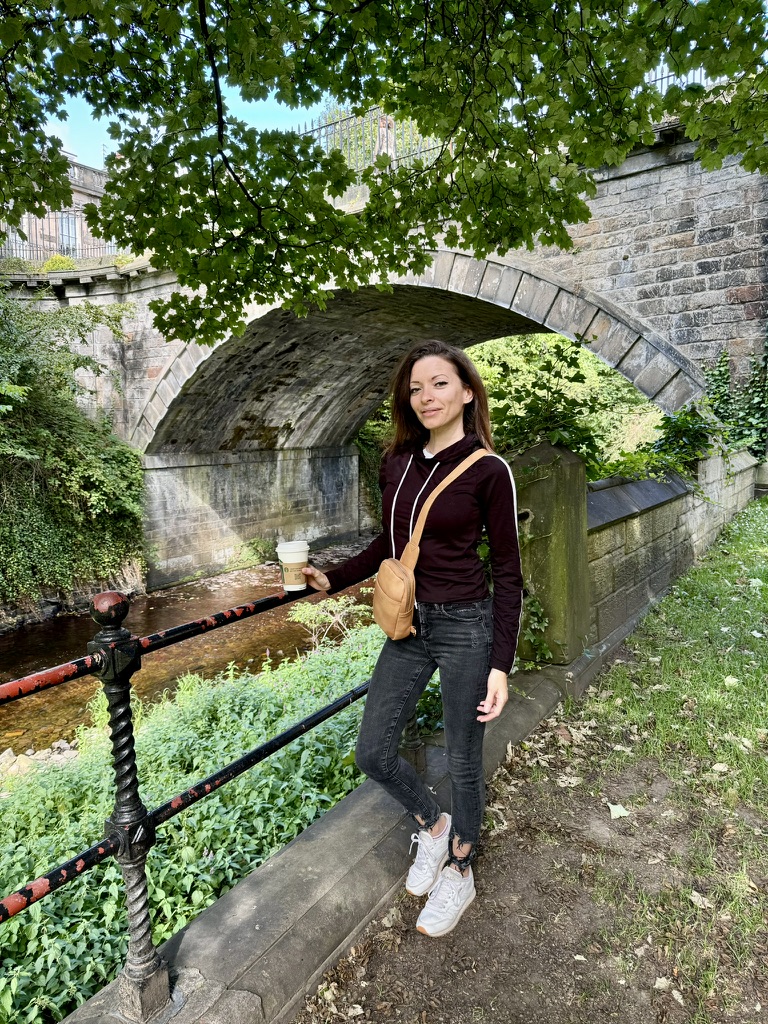
At one point in the 18th Century, the water at St. Bernard’s Well supposedly held healing properties. Legend says that people that tasted the waters or applied them to bodily ailments could be healed. Whatever benefits it used to possess, it is no longer used, and entrance into the temple that houses the goddess only happens on certain days of the year now.
We continue on our walk, leaving the trail for the pleasant street of Circus Lane and a light pub lunch. It’s early afternoon by now.
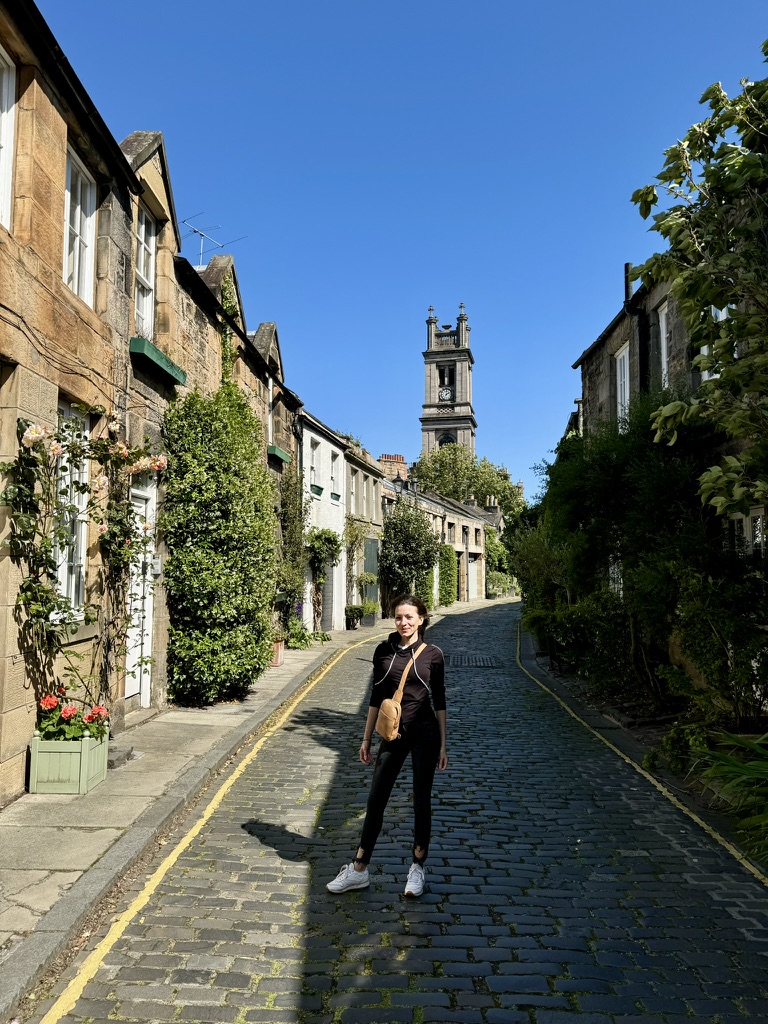
“Shall we head back after this?” Kira asks, pointing to a soup and salad.
“Not yet,” I say. I’ve already got my next destination in mind.
“What are we doing?”
“More walking. There’s a place I never made it to the first time I was here, and I’d like to see it.” I am referring to Arthur’s Seat. I was too hung over back in 2000 to get there and my travelling companion at that time rightly went without me. He then spent hours afterward telling me how I should have gone.
Kira looks at me suspiciously. “Is it close?”
“Ya.”
If we take cab. But we won’t.
My wife is skeptical. However, I think that knowing this is our last day in Edinburgh makes her go along with it. She is one of those peculiar people that resists distances. You can never plan anything that involves a longish walk and give her the details about it. But, if you just get her moving, she will take everything in stride and thoroughly enjoy herself.
We finish our nibbles and leave Circus Lane to walk East. By the time we hit Canon Street, she’s questioning me on the shortness of this walk. I deflect by offering a stop for a water and a latte. It’s my way of bribing her with distraction so we can keep going. She accepts the payment and we break momentarily before continuing on.
And when she sees the large parkland and small crags of Holyrood park, her spirit kicks in. She’s ready. We hike on well-trod paths up and up, she much more sure of herself than me – for I have always been wary of heights. Now, it is she keeping me going while I imagine a host of safety concerns with the trail. This is how we play on one another: just as I second guess my own adventure, she seems to hit full enjoyment cycle and pulls me along. We seem to spend a lot of our lives pushing and pulling each other. I trust that, with age, we will enjoy some level of balance.

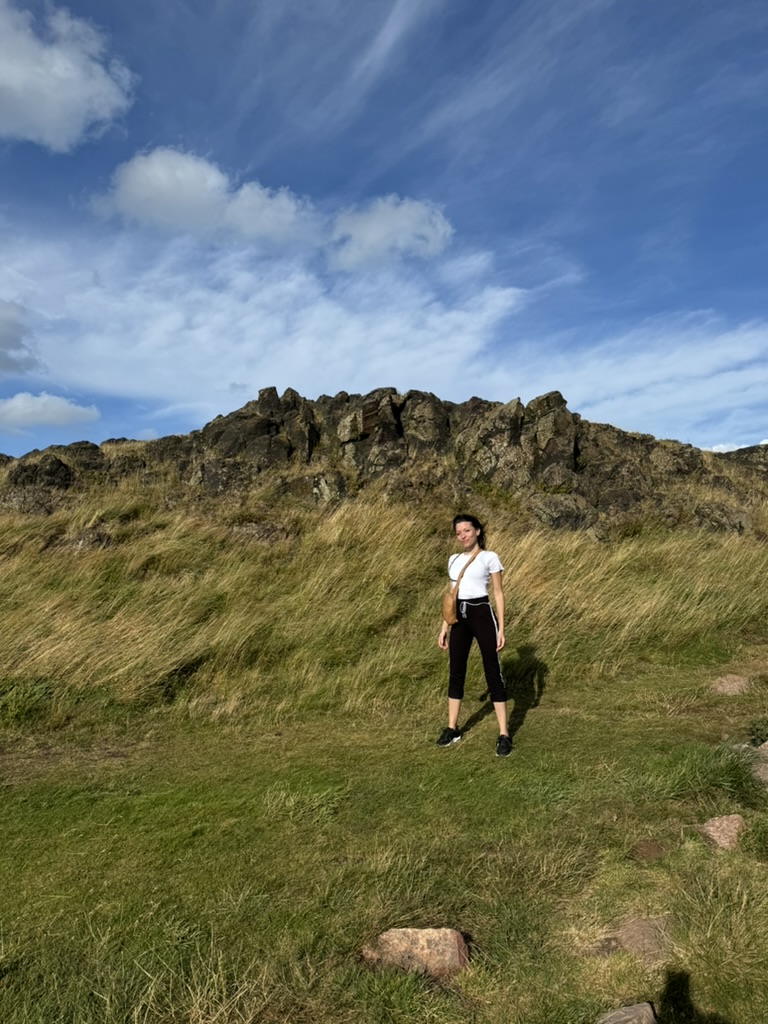
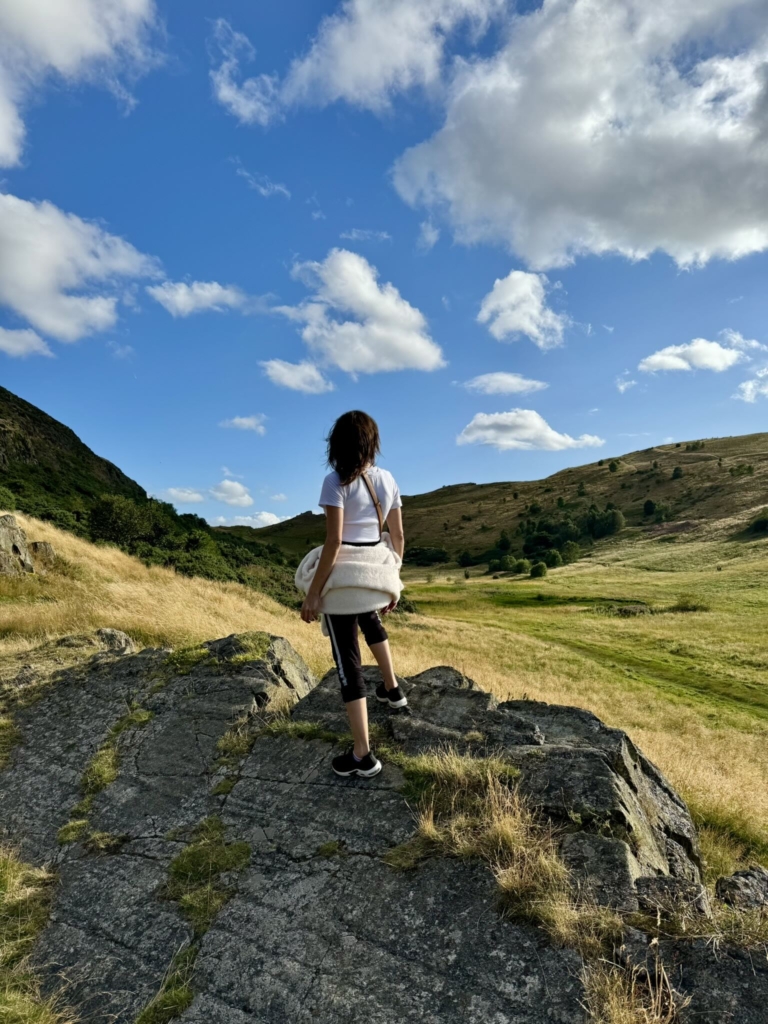
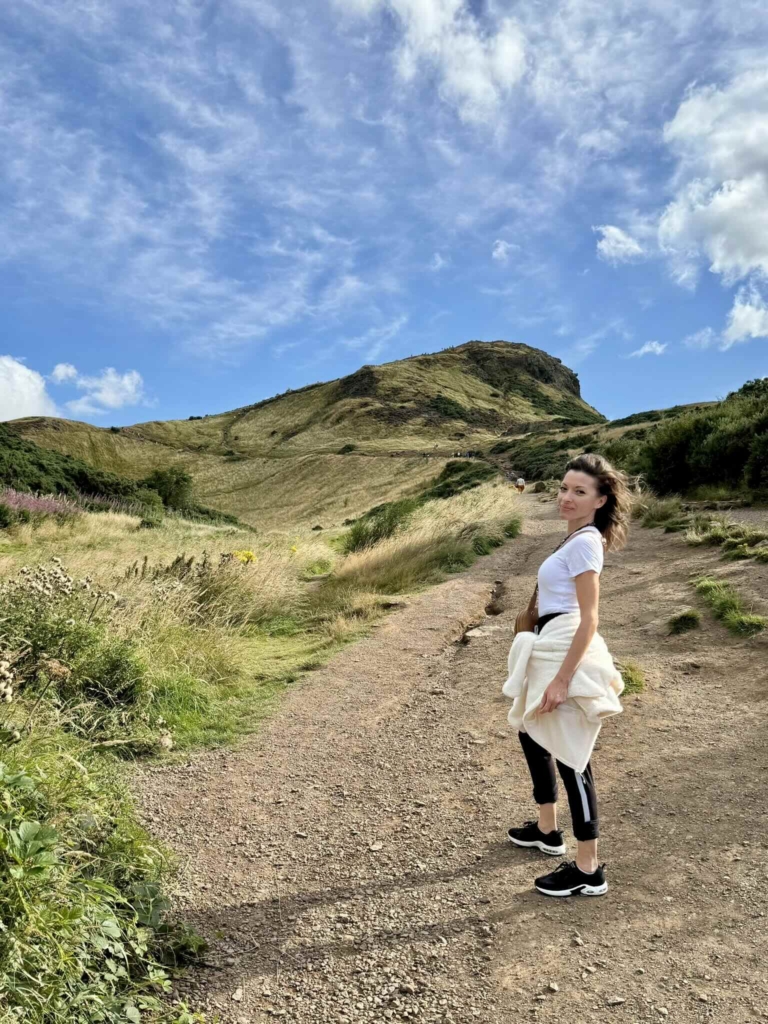
As we ascend, we take in the scenery. There are plenty of other walkers on the trail and I can see the determination of some young teenagers to break the reigns of parental supervision and run ahead, as if to remind their parents that they are youthful and much fitter. The wind is getting strong as we leave the protection of the valleys between the crags. On a plateau in the open, we experience steady gusts that try to push us around and we must lean in to advance. We scramble up the rocky mound to Arthur’s Seat, the summit of the crag. I am somewhat discouraged when a 12-year-old prances past us with ease to get to the top before us.
Edinburgh rolls out below in panoramic views. Church spires and monuments compete for visual prominence and identification. Edinburgh Castle and the Esplanade are clearly noticeable atop their volcanic rock. It’s a fitting end and sight to our one and a half days in Edinburgh. We depart early tomorrow morning to return to Toronto. I think I enjoyed this trip more than the first having seen more of the city and less the inside of pubs.
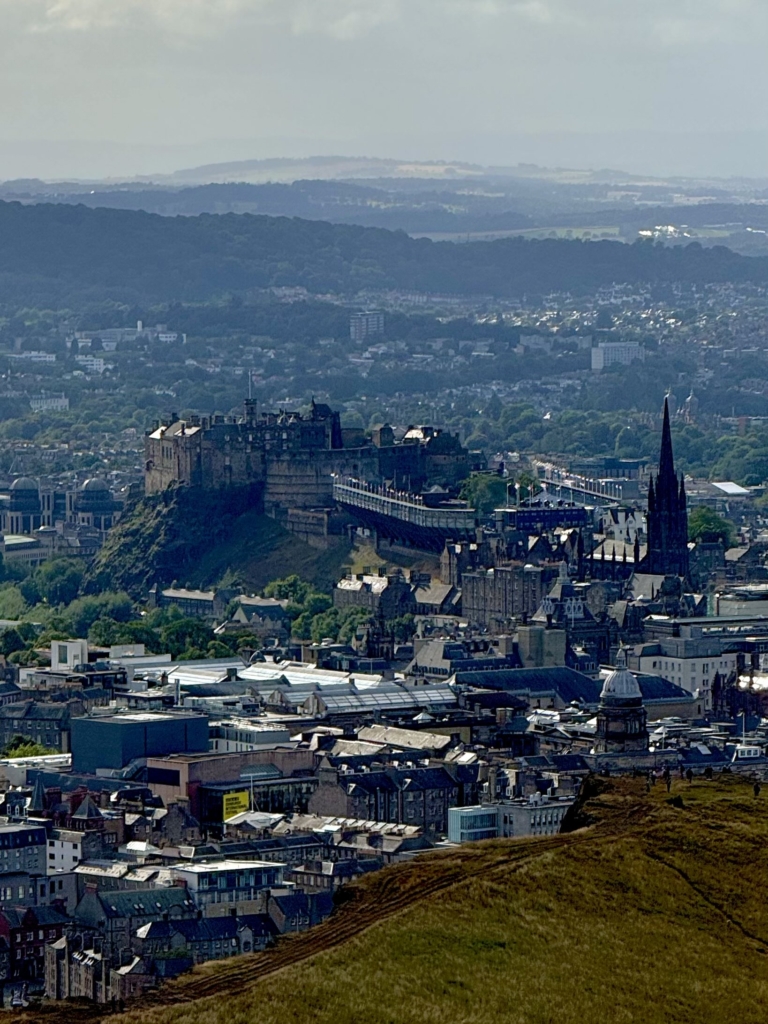
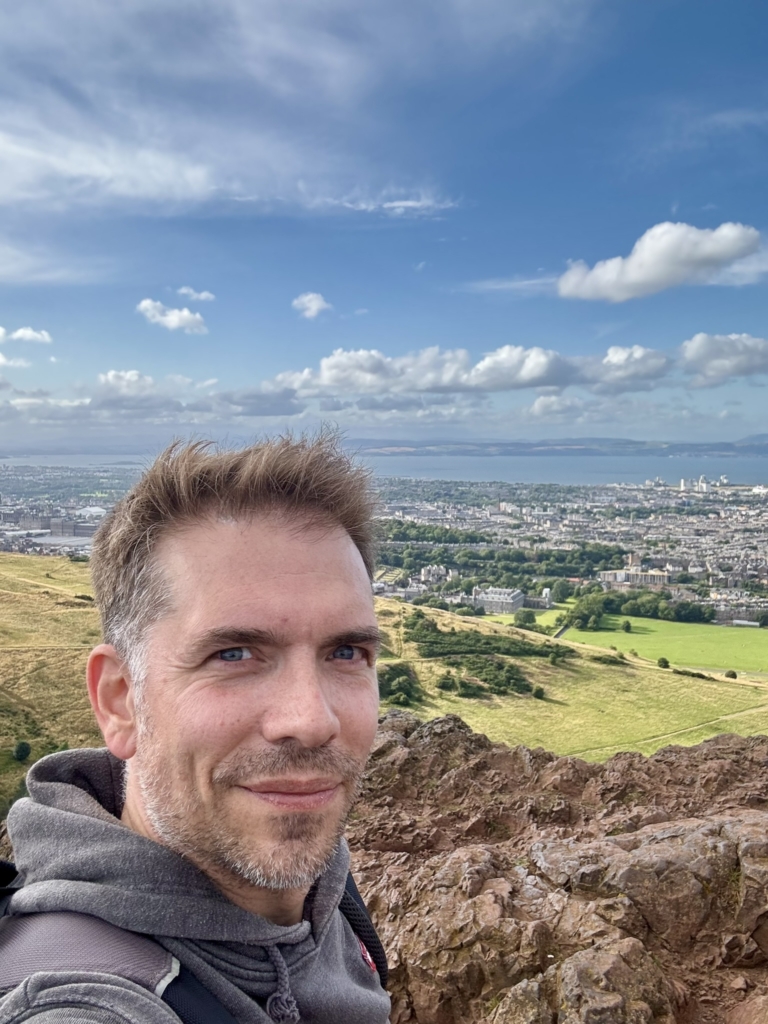
We descend back into the city to meet my mother for dinner. On our way, we stop into Canongate Kirkyard, the Presbyterian church where one of the great figures of the Scottish Enlightenment and godfather of economics and capitalism is buried. After a brief stroll around the graveyard, we find the tomb to Adam Smith (author of The Wealth of Nations).
“Oh, I’ll have to get a picture of you here,” Kira says. “I’m sure he’s one of your favs – Capitalism and all.” My wife spends much of her time lamenting the evils of Capitalism, along with every other system the Enlightenment produced.
I don’t dispute that Capitalism has problems, but under her extreme criticisms, I seem to become an ardent, if not fanatical supporter of it. I feel compelled to be a counterweight to her romantic visions of what a world would look like in the absence of it.
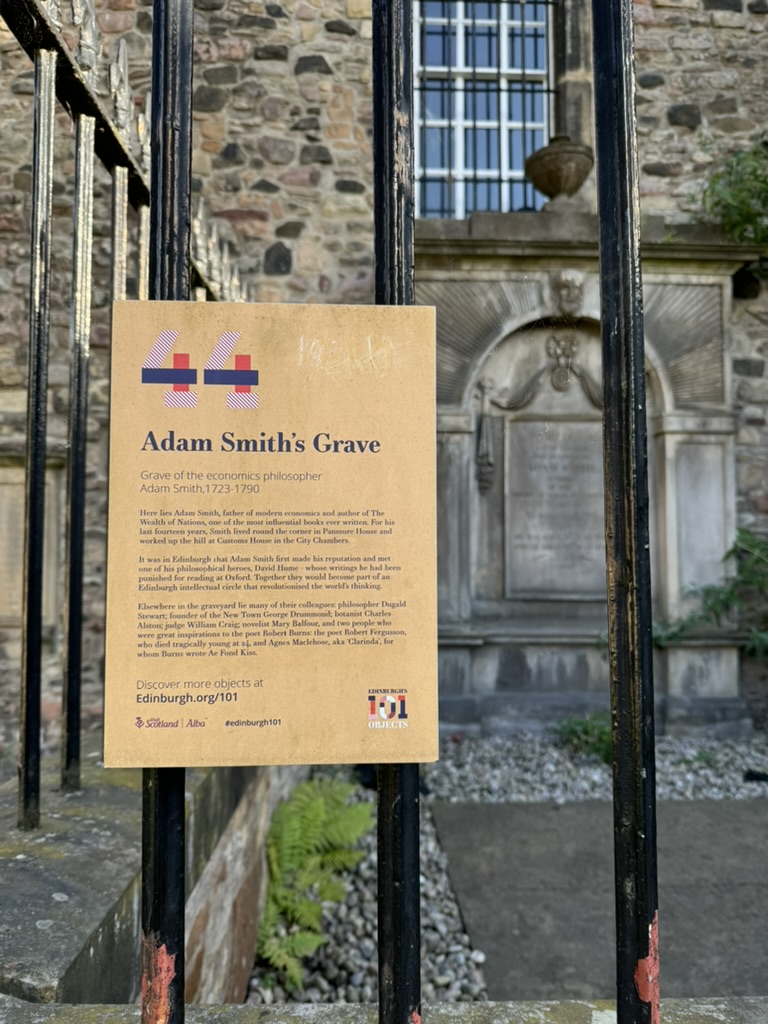
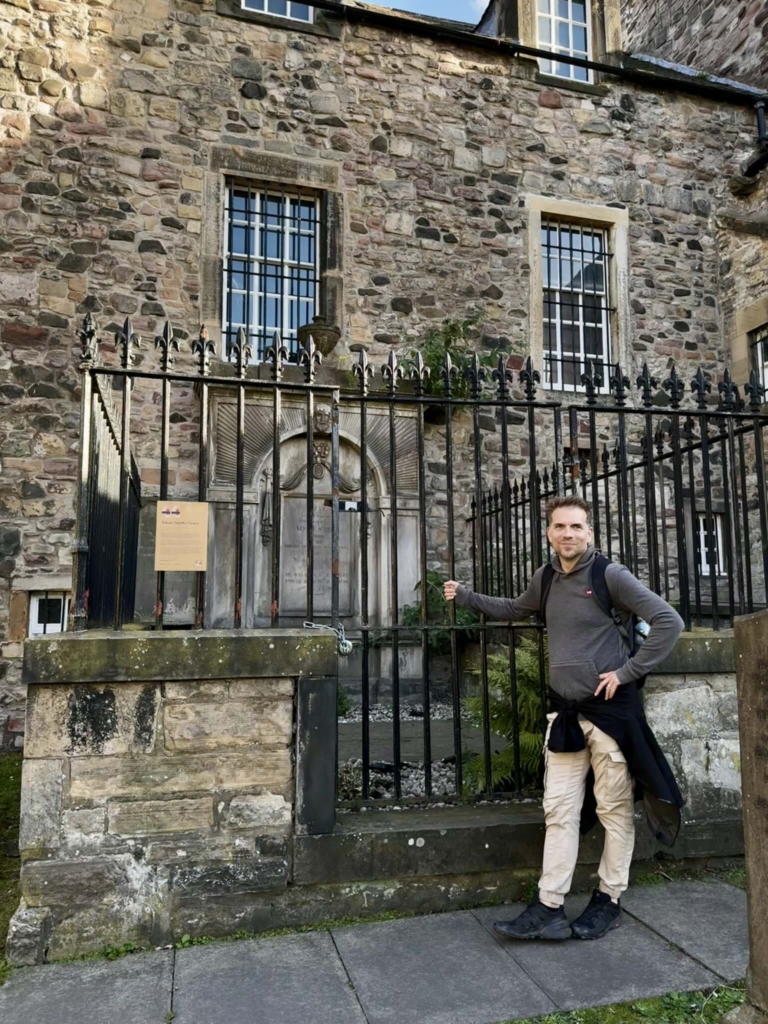
“Well, it did enable us to be here. Helped pay for our flights, tickets to the Tattoo, and hotel,” I remark.
We always start out debates in these extreme positions.
A heated discussion ensues, of which, I’ll spare the reader. For I am sure neither one of us shines well in it. As we pass through Princes Street Gardens again, we are able to ‘walk off’ our radical positions: they have softened so that we can find some middle ground on the matter of Capitalism. I’m sure we both could have started from this place, but maybe the journey to middling is what we needed.
Kira pauses to stare up at Edinburgh Castle and the beautiful Georgian and Victorian buildings with their gothic hue.
“Stunning,” she says. “Really cool.”
It is. Edinburgh is quite unique. I should probably relish the moment with her. Maybe put my arm around her and be at peace and enjoy this special scene. But I can’t resist…
“Capitalism built it all!” I emphatically announce.
Kira looks at me. “You’re such a loser.”
We hold hands as we walk back to the hotel.
